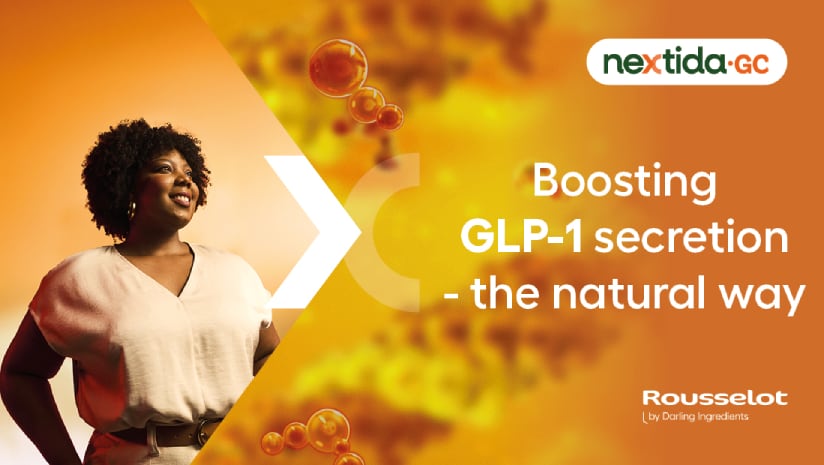Around the world, attitudes towards aging are changing. More and more older consumers want to stay active and mobile for as long as possible, keeping up with their lifestyles while holding off the natural issues of aging. This can affect a number of decisions in life, including dietary choices, social activities, and ways of exercising, as well as looking for new nutraceutical solutions for staying healthy.
A key demographic shift
Why are the ideas around aging evolving? There are several factors that impact this, but one of the central reasons is the population shift. Today, it is a clear fact that the population is aging globally. Back in 2017, there were 962 million people in the ‘elderly’ category, or 60, growing by more than double since 1980, according to World Health Organization data.1 By 2050, this figure will reach 2.1 billion – a significant growth. In terms of proportions, the following statistics emphasize the population shift:
- 1 in 6 people will be over 60 in 2030
- 1 in 4 people will be over 60 in 2050
With more and more of the population living well into their 60s and beyond, it is only natural that people want to slow down the clock and enjoy the years they have. With more research available too, consumers have become highly knowledgeable about health stoppers and boosters, pushing the healthy aging trend into the mainstream. However, another implication involves organizations and governments: with rising healthcare costs, looking after the elderly segment of society plays a key role in reducing the strain on medical institutions, while keeping this part of the population happy, satisfied, and safe.
The issues of aging
With many people raising their expectations about what is possible as they age, it is important to discuss the challenges of aging – and how rising expectations can be hard to fulfill. With advancing years come many problems related to joints and bones. Such conditions can restrict or prevent easy movement, reducing the quality of life for those aging. For example, muscle deterioration, slower recovery from illness and injury, and reduced mobility can all play a part in reducing the independence of an ager – and dealing with these issues can be hard and painful. But by targeting these issues, manufacturers can create solutions that enable agers to keep up with their lives and stay active.
Elderly nutrition solutions are becoming more popular
For the healthy ager looking to prevent these problems from arising, what solutions are there? Today, many consumers are turning to nutritional supplements to support their pursuit of an active and mobile life. That’s why the elderly nutrition segment is such a fast-growing area within the global functional food and beverage market. However, today’s aging consumers can be hard to please: they have strict wants and needs, from convenience and taste to science-backed benefits. And, with half-truths everywhere, it can be challenging to produce a nutraceutical that consumers trust. So, how can manufacturers cater to this population? The simple answer: offering potent elderly nutrition solutions that can meet the needs of the evolving market.
Download recipe booklet: Tasty solutions with collagen for elderly nutrition
One key protein that’s behind our physical health, fitness, and mobility
Within the elderly nutrition market, the search for high-quality solutions to combat the natural problems of aging leads us to the human body: to create valuable solutions that work, we need to understand our bodies’ structure and what happens as we age. In our bodies, one protein is essential to our mobility: collagen. Collagen plays a vital role in the body, ensuring the cohesion, elasticity, and regeneration of all our connective tissues, such as skin, bones, and muscles, while also maintaining the structure of our musculoskeletal system. In fact, collagen makes up around 90% of our organic bone mass and 75% of our cartilage and skin. Unfortunately, though, as we age, our bodies begin producing less collagen: it usually starts when we hit 30 and accelerates in our 40s. The result: our bones and cartilage become more fragile, causing aches and pains, a higher risk of fractures, and less mobility. The reduction in collagen impacts our connective tissues and muscles too, affecting our strength, tone, flexibility, and balance
Stopping the clock: offsetting the decline of collagen
So, as the body naturally begins to produce less collagen, we start to feel the passing of the years in our bones, joints, skin, and muscles. But, there’s good news: we can counterbalance the decline in collagen production through supplementation. With high-quality supplements, agers can hold off some of the challenges, helping them stay mobile and active for longer. This has been backed up by science, with recent clinical studies showing that collagen supplements can help to support mobility and joint and bone health.2,3,4,5,6,7
Meeting agers with collagen
With that in mind, it is easy to see why collagen is quickly becoming the ingredient of choice for so many senior nutrition manufacturers. Alongside its benefits for aging, it also offers unique formulation and application potential, allowing manufacturers to create their ideal end product to meet their audience’s demands for taste, convenience, and effectiveness. The aging consumer on today’s market wants functional foods and beverages that taste great, come from natural sources, are convenient and effective, are simple to consume, and do not have any side effects. With collagen, you can meet each and every one of these needs. By using an ingredient like porcine collagen that is perfect for premium, accessible, and cost-effective applications that stand out on the market, today’s manufacturers can offer elderly consumers the solutions they need to stay active, mobile, and independent - letting them enjoy the autumn of their lives.
Learn more about Rousselot’s unique collagen solutions; or, discover the benefits of Rousselot’s premium porcine collagen peptides.
[1] ‘Ageing and health’, Fact Sheet, World Health Organization.
[2] Soniwala, S. et al., 2018, Oral Hydrolyzed Type 2 Collagen Protects Against the OA of Obesity and Mitigates Obese Gut Microbiome Dysbiosis. Poster presentation at ORS 2018 and OARSI 2018.
[3] Jiang J.X. et al., 2014, Collagen peptides improve knee osteoarthritis in elderly women: A 6-month randomized, double-blind, placebo-controlled study. Agro FOOD Industry Hi Tech, 25:19-23.
[4] Guillerminet, F. et al., 2010, Hydrolyzed collagen improves bone metabolism and biomechanical parameters in ovariectomized mice: An in vitro and in vivo study. Bone, 46:827-834.
[5] Guillerminet, F. et al., 2012, Hydrolyzed collagen improves bone status and prevents bone loss in ovariectomized C3H/HeN mice. Osteoporosis International, 23(7):1909-1919
[6] Daneault, A. et al., 2014, Hydrolyzed collagen contributes to osteoblast differentiation in vitro and subsequent bone health in vivo. Osteoarthritis and Cartilage, 22:S131
[7] Wauquier, F. et al. 2019, Human Enriched Serum Following Hydrolysed Collagen Absorption Modulates Bone Cell Activity: from Bedside to Bench and Vice Versa. Nutrients 11: 1249





